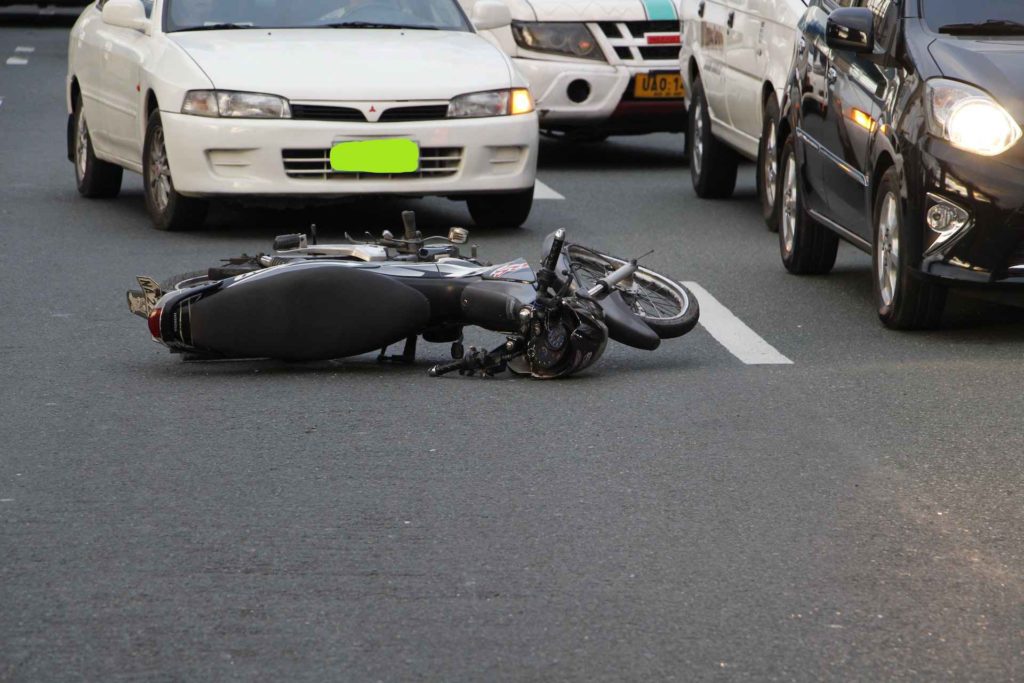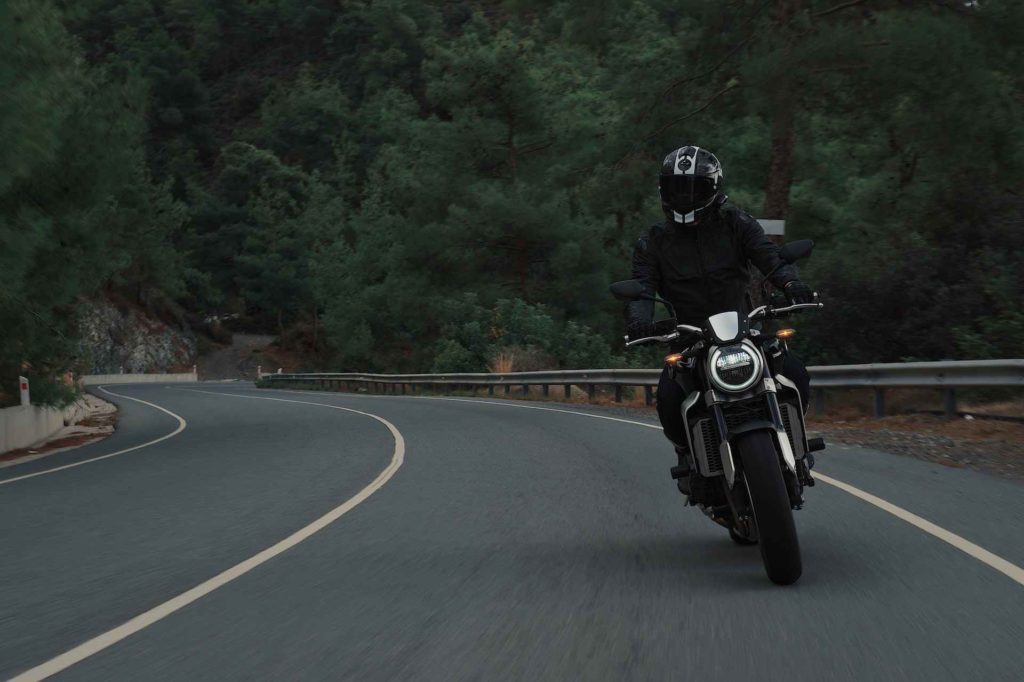According to the North Carolina Department of Motor Vehicles (DMV), about 10 percent of all fatalities in the state involve motorcycles. In 2020, the agency reported that 176 individuals were killed due to motorcycle collisions. In total, there were more than 3,400 motorcycle crashes in 2020.
The issue of lane-splitting is concerning because some studies indicate it increases the risks of accidents at high speeds. Lane-splitting or stripe-riding occurs when motorcyclists pass between rows of stopped or slow-moving vehicles in the same lane.
Some people call it white lining because motorists drive on the white lines that divide traffic lanes. Most drivers confuse it with lane sharing, but the latter involves two riders inside one lane. The vehicles may be side by side or in a staggered formation.
Connect with a personal injury lawyer immediately if you were in a negligent motorcycle accident. An attorney can help accident victims of lane-splitting accidents receive compensation for medical bills, property damage, and emotional suffering.
Key takeaways:
|
North Carolina’s Rules on Lane-Splitting
Although North Carolina has no law explicitly banning lane-splitting, it discourages it. Its Department of Transportation (DOT) published a Motorcyclists’ Handbook stating that motor vehicles need an entire lane to operate safely. Hence, white lining is usually prohibited.
According to the handbook, motorcyclists should always maintain a safe following distance to prevent motorcycle and car accidents. Unfortunately, most motorcyclists are tempted to drive between lanes of vehicles during heavy traffic. Lane-splitting accidents also happen when drivers are preparing to turn at an intersection, leaving a highway, or passing another car.
The DOT provided the following guidelines to help motorcyclists keep safe when passing and being passed:
- Ride on the lane’s left side to be more visible to other drivers.
- Signal, use your motorcycle’s mirrors, and look behind to see the traffic situation.
- Once it is safe, move into the left lane and increase your speed. Choose a spacious lane position to avoid hazards.
- Drive through other vehicles’ blind spots as fast as possible.
- Signal again when you plan to return to your original lane.
Remember to follow the posted speed limit when passing by other vehicles. This way, you can avoid harming yourself, other drivers, passengers, and pedestrians.\
Petition to Make Lane-Splitting Legal in North Carolina
North Carolina does not have an explicit directive for or against lane-splitting. As a result, one of its residents started a petition on Change.org. It called for legalizing lane splitting as the the lack of legislation causes inconsistent court decisions in lane-splitting accidents. Hence, when white lining becomes legal, the courts have an objective basis for their decisions.
The petition also aims to impose the following limitations:
- Motorists must not exceed 45 mph and not more than 15 mph than the surrounding traffic.
- Other cars must not impede the motion of lane-splitting motorcyclists.
- The state should not allow lane-splitting for vehicles with more than two wheels.
The petition based its claims on a UC Berkeley study, stating that stripe-riding does not necessarily pose more significant risks for injuries. According to the Safe Transportation Research and Education Center (SafeTREC), white lining is relatively safe if road traffic is 50 mph or less. Moreover, motorists must not exceed the speed of other drivers by more than 15 mph.
The petition also mentioned California, one of the states where lane-splitting is legal. The researchers analyzed motorcycle accident data in California and found that speed contributes to these collisions. The lead author said that the best way for lane-splitting motorcyclists to avoid accidents is to slow down.
Dangers of Lane-Splitting in North Carolina


Riding between lanes of traffic poses the following dangers:
- Passengers from other vehicles may unexpectedly open their doors
- Car passengers or drivers may stick their hands out of the window
- Other drivers may suddenly change lanes
- Large trucks may not see the motorcyclists
- Turning vehicles may collide with the motorcycles
For example, suppose a driver or passenger sticks their hand out the car window as a motorcyclist is passing at high speed. In that case, it can lead to an accident. Researchers at UC Berkeley also found that the greater the speed of the motorcycle and surrounding vehicles, the greater the risk of an accident. Hence, the North Carolina DOT discourages motorcycle riders from lane-splitting.
Effects of Lane-Splitting Accidents
Lane-splitting accidents can cause injuries and fatalities. As a result, accident victims must undergo emergency medical treatment, therapy, or surgery.
Injuries
Victims of motorcycle collisions often suffer from road rash since motorists have little protection against rough surfaces. Most cases of road rash heal within two weeks, especially if you take good care of your wounds.
However, road rash can affect all layers of the skin. When an accident involves severe abrasions, you might need skin grafting surgery.
Motor vehicle accidents can also cause bone fractures. Symptoms of broken bones include pain, swelling, tenderness, skin discoloration, and inability to move a body part. You need a splint or cast on the affected area if you have a mild fracture. If you sustain severe fractures, your healthcare provider will recommend surgery.
A minor lane-splitting accident can lead to a gas tank leakage which can spark other motor components. Hence, motorcyclists may also experience burns from spilled gas. Widespread burns can also involve bacterial infection, low body temperature, scars, bone problems, and fluid loss. If you experience deep burns, your doctor will require skin grafting.
Since motorcycle collisions can throw off a rider from their motorcycle, the victim can suffer from spinal cord injuries. A spinal cord injury can affect sensory and motor functions or cause issues in a particular area. It can also damage nerve fibers. Symptoms of spinal cord injuries include decreased sensation, severe pain or pressure, and difficulty breathing.
Patients may need surgery, corticosteroid injection, and physical rehabilitation. These treatments help enhance the patient’s quality of life and restore nerve functions.
A violent blow to the head due to a lane-splitting accident may also cause traumatic brain injuries (TBIs). Victims may experience headaches, fatigue, speech problems, and loss of balance. Moreover, they may have blurred vision and extreme mood swings. Treatments include rehabilitation programs and surgeries.
In cases of injuries, you may receive compensation for medical bills, disfigurement, and emotional distress.
Fatalities
Lane-splitting accidents can also lead to deaths. The North Carolina DMV reported that 199 fatal motorcycle crashes occurred in 2021. Moreover, the agency documented a five-year average of 171 deadly motorcycle collisions in North Carolina.
In wrongful death cases, the victim’s immediate family can receive reimbursement. These include funeral costs, lost wages, lost earning capacity, and lost companionship.
Possible Liable Parties in a Lane-Splitting Accident
Liability may lie with the motorcycle driver or other drivers in a lane-splitting accident. You need experienced motorcycle accident attorneys to prove negligence and liability.
Motorcycle driver
Since North Carolina discourages lane-splitting, the at-fault driver will likely be the motorcyclist. However, the other drivers must prove that the motorcyclist acted negligently. According to Cornell Law School, the elements of negligence are:
- Defendant’s legal duty
- Breach of duty
- Plaintiff’s injury
- Connection between breach and injury
A sample scenario involves B, a motorcycle rider, and C, a car driver. B must observe the speed limit, but they violated it while splitting lanes with C. As a result of the motorcycle accident, C suffered fractures. In this case, C may initiate a personal injury claim against B.
Other drivers
The other drivers can still be liable if they acted negligently. Suppose a motorcycle rider followed all the guidelines, but the car driver did not let them pass safely. In that case, the motorist can be liable for the accident. However, proving another driver’s liability might be difficult since the state discourages white lining. Hence, you need a motorcycle accident lawyer to help win your case.
Motorcycle Driving Laws in North Carolina


Motorcycle riders in North Carolina must know about the Safety Helmet Law and guidelines regarding registration and endorsement.
Safety Helmet Law
The North Carolina law requires all motorists and passengers on motorcycles and mopeds to wear a safety helmet. Moreover, the motorcycle helmet must comply with the Federal Motor Vehicle Safety Standard No. 218.
The DMV lists the following requirements:
- The helmet must have a thick inner liner of about one-inch polystyrene foam. Although some manufacturers cover the foam with a comfort liner, they should still comply with the recommended thickness.
- Your safety helmet must have a permanent DOT sticker on its back. Novelty-type helmets have separate stickers. Take note that a sticker does not make the helmet compliant with government requirements.
- The helmet must have a permanent label with the manufacturer’s name, helmet’s model, size, shell type, materials, and manufacturing date. It must also contain instructions for cleaning.
In 2020, North Carolina reported 190 fatal motorcycle fatalities, 18 of which involved unhelmeted riders. Researchers found out that safety helmets reduce the risk of head injury by 69 percent. Since head injuries usually cause fatalities, helmets can help reduce deaths involving motorcycle accidents.
Although people who use moped do not need a driver’s license, they must be at least 16 years old. They must also register their mopeds and always wear a helmet.
Registration and endorsement
To operate a motorcycle in North Carolina, a person must apply for a motorcycle learner permit and pass several tests. These include a knowledge test, road sign identification, and vision tests. Motorcyclists aged 16 to 18 must have signed parental consent and complete a motorcycle safety course. The DMV issues motorcycle learner permits for 12 months and renews them once every six months.
You must also apply for a motorcycle endorsement and pass the knowledge and off-street skills tests. The knowledge test may contain questions about brake light and headlight use and proper driving behavior. On the other hand, the skills test determines your ability to handle various traffic situations.
Motorcycle Insurance Laws in North Carolina
According to the state’s motor vehicle laws, motorcycle owners should purchase vehicle liability insurance. The coverage includes payment for bodily injury and property damage. The policy must cover at least $30,000 per person or $60,000 per accident for bodily injury compensation. It must also include $25,000 for property damage.
Liability
Additionally, North Carolina requires motorcyclists to include uninsured motorist coverage for the same amount as the bodily injury liability coverage. Uninsured and underinsured motorists coverage will compensate the policyholder when the at-fault motorist has insufficient or no
Did you know?
According to Insider, the average motorcycle insurance cost in North Carolina is $464. On the other hand, motorcycle owners in Utah pay an average of $239, while motorists in Hawaii pay about $1,523 for motorcycle insurance.
Find a Motorcycle Accident Lawyer in North Carolina
North Carolina does not have legislation regarding lane-splitting, but the practice is widely discouraged. Suppose you are in a motorcycle accident that involves white lining. In that case, the court may hold the motorcyclist liable for injuries and property damage to others.
The absence of a law on lane splitting in North Carolina makes a personal injury claim problematic for motorcyclists. An experienced motorcycle accident attorney can limit liability and secure compensation for your injuries. They can also gather evidence and represent your case in court.
Visit The Personal Injury Center if you or a loved one sustained injuries in a lane-splitting accident. Our website contains legal resources to help you understand your rights. We can also connect you to personal injury lawyers in North Carolina. Contact us today!
Are you involved in a lane-splitting accident? The Personal Injury Center provides free legal information to protect your rights. Schedule a free consultation today!
FAQs on Lane-Splitting in North Carolina
What states allow lane-splitting?
Aside from California, the following states allow lane-splitting or lane-filtering: Arizona, Montana, and Utah.
What is the statute of limitations for lane-splitting accidents in North Carolina?
In North Carolina, injured persons due to lane-splitting accidents have three years to file a civil case.
Does South Carolina have a lane-splitting law?
South Carolina Code Section 56-5-3640(c) forbids motorists from driving between lanes of traffic.



